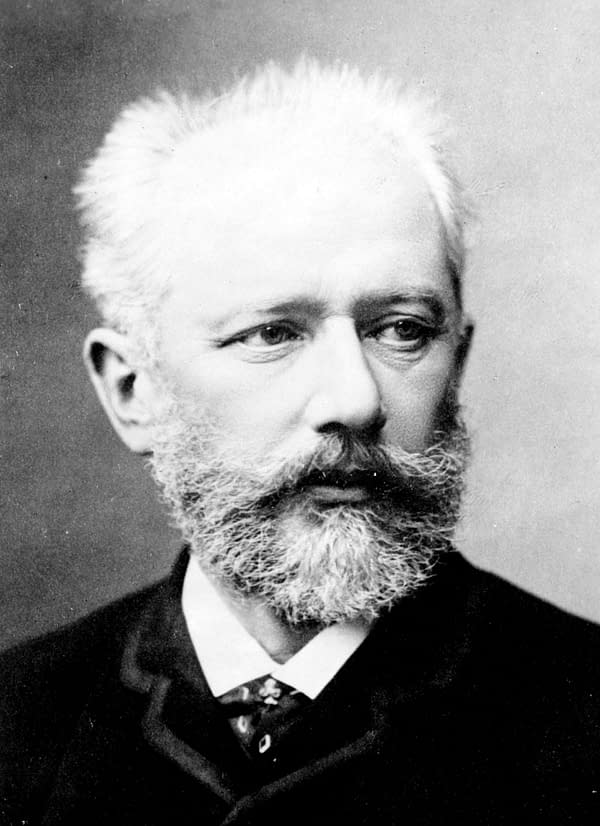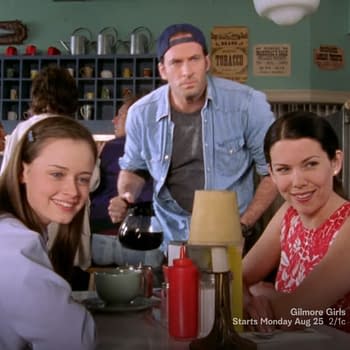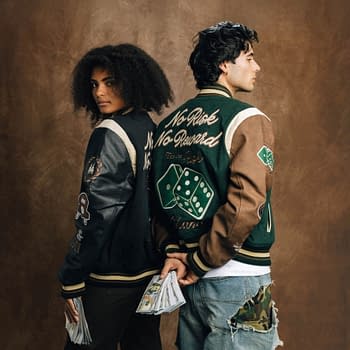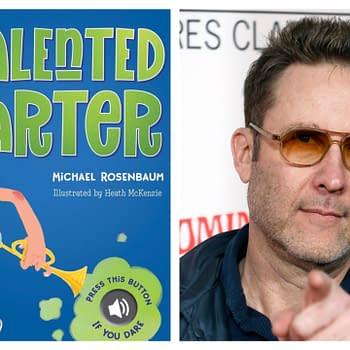Posted in: Music, Pop Culture, YouTube | Tagged: bleeding cool, brett yang, classical, eddy chen, hilary hahn, janine jansen, music, music history, music theory, ray chen, tchaikovsky, twoset, twosetviolin, violin
Tchaikovsky Violin Concerto: Analysis In Interpretation
Musical interpretations vary widely from smooth jazz covers of Disney's Frozen to faithful recreations of Baroque chamber music as it was played in its time. But what makes an interpretation different if the music, instrumentation, and mechanics are exactly the same? To learn more about this, let's study Tchaikovsky's Violin Concerto.

History:
Pyotr Ilyich Tchaikovsky's only violin concerto was composed in 1878, with the first performance not until 1881 by the Vienna Philharmonic with soloist Adolf Brodsky. Having been composed in the latter part of his career, it was written during his escape from Russia in the wake of a sham marriage to a near-stranger that ended within three months and led the composer to attempt suicide. In the wake of this, his brother encouraged him to leave Russia for a while to clear his head, which led to his sabbatical in Switzerland, where he finished works he started before his marriage and composed several new ones, including his violin concerto. It's widely accepted that Tchaikovsky's marriage was the result of his closeted homosexuality and he was romantically involved with his former student, Joseph Kotek, a virtuoso violinist. Kotek visited Tchaikovsky in Switzerland and inspired him to write a piece for violin and orchestra, similar to Lalo's Symphonie Espagnol. The piece is not dedicated to Kotek, nor did he ever publicly perform it (despite helping Tchaikovsky compose it and memorizing it as pages were written) for fear of gossip and scandal of romantic involvement.
Form:
Structured in three movements, the first, the Allegro moderato, is in D major and is in sonata form. This means it's divided into 5 distinct sections: introduction, exposition, development, recapitulation, and coda. The introduction is played by the orchestra and transitions to the exposition when the soloist introduces the main theme followed by scales, triads (stacked three-note chords), embellishments. The secondary theme (a more largo section in A major) is also introduced here. The exposition closes with the entire orchestra returning to play the main theme (this happens a little over a third of the way into the first movement).
The development starts with the soloist playing variations on the main theme with each repetition increasing in speed and notes and ends with a cadenza section. The recapitulation brings the orchestra back in with the main theme. The coda is the quickest section of this movement consisting of frenzied soloist passages and large orchestral swells.
The second movement is the Canzonetta: Andante. Structured as the slowest of the three movements (per form), Tchaikovsky originally wrote another piece as this movement, but replaced it with the one performed today upon critiques from friends. His original Canzonetta was separately published as Souvenir d'un lieu cher.
Finale: Allegro vivacissimo is the final movement, bringing the main theme back with vigorous cadenzas and heroic theme repetitions from the orchestra as the soloist and orchestra pick up speed and race to the finish in a grand display of dynamic swells featuring the bold Russian folk motifs. The ending is dramatic with the soloist leading the orchestra in building a wall of grandiose sound and ending in strength and power.
Interpretations:
This is a staple piece in the solo violin repertoire by merit of not only being by a famous composer, but also for its technically challenging elements as well as appeal to audiences by being musically interesting with a clear theme strongly present throughout the piece.
As with any piece, each musician interprets it differently and plays with different phrasing, passion, and emotion, which adds new depth and personalization to the written score. Some say a soloist's interpretation is heavily influenced by their teacher, however, I give the musician themself credit; art created is influenced by the artist's environment. The final decision in how their art is created is left up to their passion, feelings, and artistry. That artist is the only person who can present this form of art exactly as they see it.
While it's tempting to include every single iteration of the piece performed, in the interest of time and being succinct, here are the "top three" highlights of the more famous interpretations.
Jascha Heifetz shows off his dexterity exceptionally well right out of the gate in the rapid variations of the first movement – as was one of his trademarks and strengths. This frenzied interpretation of the section creates tension and builds up to the resolution where the orchestra comes back in with the sweeping main theme of the movement, creating a payoff that makes it that much more rewarding for the audience. His recording of the entire piece comes in at under half an hour. Though his sound is still thick, as was the style of the day, he maintains his clarity and nimble cadenzas, bringing his own sound to the "old school" methods.
David Oistrakh is a powerful violinist whose phrasing and interpretation places the focus on the power of the piece rather than emphasizing the "lightness" giving the piece a floaty dreamlike quality. The wide vibrato (which was a popular choice in his day) adds to the richness of the sound making it similar to a musical version of a thick, rich potato soup. (Okay, so I'm hungry, but I stand by this comparison.) This choice to focus on the power of the Russian folk elements of the piece give it a warm, robust sound.
Janine Jansen has possibly my favorite interpretation of all the current modern soloists performing this piece and that's for her balance. Make no mistake, balance does not mean boring or rote – in this case, it's a balance of the more nimble, lighter interpretation like that of Joshua Bell, a sweet flowing take on the piece like Hilary Hahn's, and the more powerful takes on the piece like Itzhak Perlman or Ray Chen (who has a fantastic video on his interpretation and thoughts on the piece).
TwoSetViolin gets an honorable mention here by virtue of youth and culture. Their livestream arrangement of the piece is only for two violins (and features multiple bouts of exclamations and chatter during the piece from the soloist, Brett Yang as well as an interpretive dance with balloons by "orchestra" Eddy Chen), however, they still manage to fill the space with a solid sound. Yang's interpretation is more nimble, reserving the true power for certain places to create emphasis as opposed to a baseline. The influences of Jansen, Hahn, Heifetz, and others before have informed his interpretation in a way that doesn't feel sloppy or "borrowed"; the result is a modern performance informed by past interpretations.
TwoSet's performance also serves as a reminder to show just how challenging this piece is and how a seasoned professional soloist makes this sound effortless. They are musicians first, but their living is not creating music, it's creating comedic commentary on the musical world by way of social media videos. They don't have the luxury of sitting with anything but a piece for any amount of time and dedicating days to the practice, study, and research of that single piece. A soloist's interpretation of a piece is the result of years and years of consistent practice to the point where the violinist isn't focused on the mechanics of the piece any more and can solely concentrate on expressing the emotion of the music they're playing.
There's a reason why this piece is a classic and still in regular performance repertoire: Tchaikovsky composed from a place of passion, and his music still resonates with audiences young and old. A good interpretation of Tchaikovsky's Violin Concerto or any piece of music comes from a place of passion and love of music – all of these performers pass on their love of the craft and the piece through their interpretations, though they're wildly different. It doesn't matter how you interpret the piece or which you prefer, the beauty of the piece and the appreciation and love of music is all that matters.














